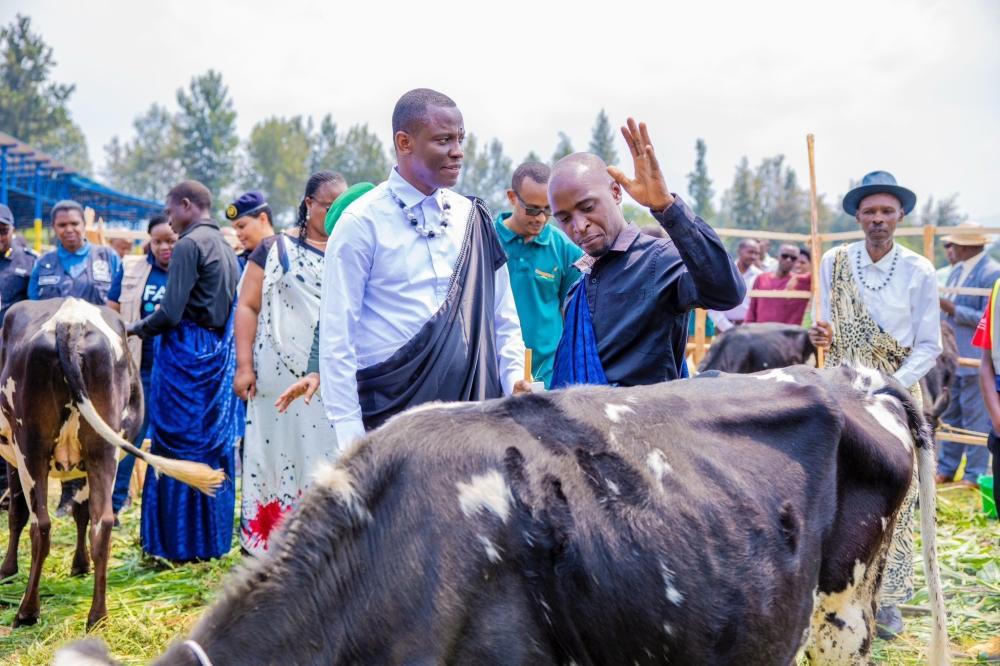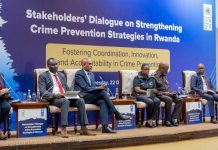Maurice Nirere
Africa-Press – Rwanda. One evening in April, when I was winding down from a long day, a headline on social media caught my attention. The National Institute of Statistics of Rwanda (NISR) had just released the latest poverty statistics from the EICV7 survey, a Living Standards Measurement Survey used to track poverty trends in the country. The announcement was highly anticipated by policymakers, social protection actors, and development practitioners, especially since the release had been delayed by the Covid-19 pandemic.
As I skimmed through the summary, I was excited to celebrate the remarkable 12.4% decline in poverty, a rare achievement in the history of EICV surveys. However, as I delved deeper into the findings in the days that followed, my initial enthusiasm gave way to concern. In fact, 27.4% of Rwandans, nearly a quarter of the total population, still live below the national poverty line. In this opinion piece, I share my reflections on the published poverty statistics and, more importantly, propose areas that need strengthening if we are to ultimately win the fight against poverty.
VIDEO: Making sense of household living conditions
The government’s poverty reduction agenda, outlined in the National Strategy for Transformation and the Social Protection Sector Strategic Plan, aims to support the poor while enabling their graduation from poverty, with a target of lifting 70% of people currently in poverty out of it by 2029. This means that, out of approximately 3.8 million people in poverty, around 2.6 million are expected to escape poverty within just four years.
This commitment places responsibility on us to both promote graduation for those in poverty and protect the non-poor from falling back. It is a demanding task, given that only 1.5 million people graduated from poverty in the past seven years and amid shrinking global aid budgets.
Unlike non-poor individuals, people living in poverty often lack the capacity to benefit from opportunities created by economic growth. For this group, social assistance interventions are essential to support their graduation out of poverty. Such interventions are a cornerstone of social protection, directly targeting households living in poverty and contributing to the reduction of poverty and inequality. To my knowledge, many social assistance interventions in Rwanda still lack some critical elements that are essential for effective social assistance. Here, I highlight two areas that require improvement, with reference to the Vision 2020 Umurenge Programme (VUP), the government’s flagship nationwide initiative to reduce poverty.
Targeting method
Every social assistance programme begins with targeting; the process of identifying those who need support the most. When targeting is weak, two major errors can occur: inclusion errors, when benefits go to people who are not poor, and exclusion errors, when those in poverty are left out due to poor identification or barriers to access.
Research consistently shows that although perfect targeting is difficult to achieve, the errors can be greatly reduced with careful design and strong implementation.
The targeting errors are evident in the VUP programme. Data from the last three EICV surveys indicate that more than half of VUP participants receive support even though they are not poor. According to the EICV7 VUP report, 41% of the 1.6 million beneficiaries were poor, meaning that 59% received assistance despite not being poor. It is possible that some households were poor when they first joined the programme, and later graduated out of poverty by the time of the EICV7 data collection. To further examine and confirm the incidence of targeting errors in the VUP programme, I reviewed the EICV4 VUP survey, which was conducted during the period of large-scale enrolment into VUP, and found a similar situation, with a high rate of targeting errors among households enrolled during that period.
This clearly indicates a mismatch in the identification and delivery of social assistance, where resources intended for the most vulnerable frequently end up being received by individuals who are not poor. Such misallocation undermines the impact of poverty reduction efforts and makes the goal of poverty graduation more challenging.
Coverage and benefit expansion
As noted earlier, an estimated 3.8 million Rwandans live in poverty. These are the very individuals who need social assistance interventions to help them graduate out of poverty. Yet, the VUP programme currently benefits 1.6 million individuals nationwide, less than half of the poor population. This gap underscores the urgent need to expand coverage so that assistance reaches those who need it.
The coverage expansion does not necessarily mean increasing the budget alone; it also calls for a more equitable redistribution of existing resources. As previously highlighted, more than half of VUP participants are not poor even at the time of enrolment. This suggests that significant resources are directed to non-poor households, resources that could instead be reallocated to households living in poverty.
In the same vein, expanding coverage must go hand in hand with strengthening the social assistance intervention package. Poverty cannot be reduced through interventions that are too small or inconsistent to make a meaningful difference.
Different sources highlight the inadequacy of interventions as a major factor limiting the impact of social assistance on poverty. For instance, in a quasi-experimental impact evaluation I conducted on VUP’s Direct Support component, it was found that while the scheme helps households cope with economic risks, it does not lift them above the national poverty line.
This opinion piece reflects on Rwanda’s poverty statistics and highlights two critical areas for improving social assistance: better targeting and broader, more adequate benefits. With shrinking aid budgets and competing government priorities, accurate and equitable targeting is essential to ensure every franc reaches those who need it most.
Equally important is expanding coverage to reach more of the poor and ensuring the intervention package is sufficient. These actions are the responsibility of the government, which bears the primary role in fighting poverty, and of development partners whose missions align with supporting poverty graduation. Only by addressing these areas collaboratively can social assistance fully fulfill its role in driving poverty reduction in Rwanda.
Source: The New Times
For More News And Analysis About Rwanda Follow Africa-Press






